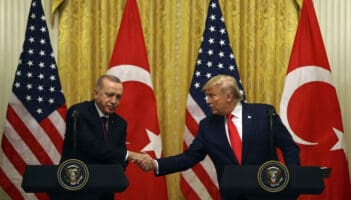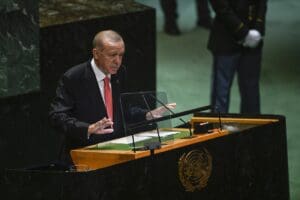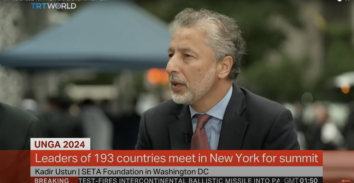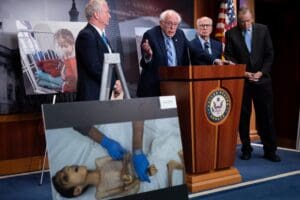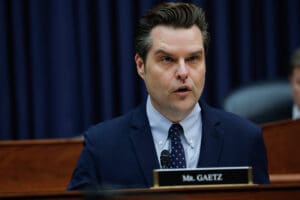G7 summit proves US-EU trade war to deepen
Last week in this column, the topic was the increasing tension in transatlantic relations. The EU and U.S. relations have been deteriorating for the last few years due to increasing disagreements and disputes on key policy and economy issues. The two parties diverged significantly in foreign policy issues following the rising trends of unilateralism in U.S. foreign policy and protectionism in U.S. economic policy. The lack of effectiveness in EU institutions responsible for the common foreign policy also contributed to this situation.
In the last few months the U.S. diverged with its allies in Western Europe in key foreign policy issues, including the Jerusalem decision and the Iran Nuclear Deal. Following this, the two parties faced one of the most significant economic tensions in the aftermath of the U.S. decision to impose tariffs on the steel and aluminum from the EU. These developments also deteriorated the trust problems between the EU and U.S. While there are constant reaffirmations from the bureaucracies of the EU and the U.S. about the solid base for the alliance relationship, everybody also knows that something is going awry in transatlantic relations.
The outcome of the G-7 Quebec summit signals that the trade war between the U.S. and EU will continue for a while
The G-7 summit this weekend in Quebec was considered an important opportunity for U.S. allies to get together and resolve key issues. Considering the changing dynamics of the global economy and increasing question marks in regards to the commitment of countries for the liberal international order, many have regarded the summit to provide relief for skeptics around the world. It was critical for the EU member countries of the G-7, including Germany, France, Britain and Italy as well as the representatives of the EU to talk about the potential implications of the tariff decision of the U.S. Canada was also one of the countries that was impacted by the tariff decisions.
Finally, the last member of the G7, Japan had already felt the shock of the new U.S. trade policies following the withdrawal of the U.S. from the Trans-Pacific Partnership (TPP). The talks among these partners were hoped to bring calm to international markets. However, President Donald Trump demonstrated that he would not stop his policies and change his stance in regards to trade issues unless he gets what he wants from the other countries.
The late arrival of President Trump to the summit might have signaled for some the potential outcome of the meeting. According to reports, President Trump was not enthusiastic at all to attend this meeting and even the night before his arrival he tried to figure out if it was too late to cancel his participation in the summit. After the summit, he organized a press conference in which he started to give many headlines to the journalists. First of all, he suddenly stated that Russia’s membership in the group needs to be reinstated. Russia’s participation was suspended following its annexation of Crimea.
President Trump indicated that Russia’s presence will be an asset to the meeting. This statement demonstrated a significant and serious cleavage in transatlantic relations. None other leaders endorsed the suggestion of President Trump. Moreover, according to reports, Canadian Prime Minister Trudeau told President Trump that Russia’s membership in the group is “not something we are even remotely looking at.”
Secondly in regards to the tariffs and trade disputes, President Trump once more reiterated that the U.S. has been wrongly treated. He said, “We’re like the piggy bank that everybody is robbing.” However, as before he blamed past presidents for accepting such agreements. He said: “I don’t blame other leaders for that. I blame our past leaders. There is no reason that this should’ve happened. … In fact, I congratulate the leaders of other countries for so crazily being able to make these trade deals that were so good for their countries and so bad for the United States.”
This showed that he would remain defiant in regards to his earlier decision about the tariffs. The minutes from the meeting demonstrated that the leaders from different countries united against the trade protectionism of the U.S. In their minutes, it was stated, “Concerns were expressed that the tariffs imposed by the United States on its friends and allies, on the grounds of national security, undermine open trade and confidence in the global economy.” As if this tension and these disagreements are not sufficient, President Trump generated more tension by leaving the meeting early on Saturday.
His departure did not end the disputes among the G-7 countries. Prime Minister Trudeau held a press conference following the meeting and declared a joint communiqué in which the countries declared their commitment for free, fair and mutually beneficial trade and investment. Prime Minister Trudeau also stated his reaction to President Trump’s attitude about the trade issues, which irked the president. In a tweet President Trump decided to withdraw the U.S. from the joint communiqué of the G-7.
He tweeted attacking the prime minister of Canada. In his tweet he stated, “Based on Justin’s false statements at his news conference, and the fact that Canada is charging massive Tariffs to our U.S. farmers, workers and companies, I have instructed our U.S. Reps not to endorse the Communiqué as we look at Tariffs on automobiles flooding the U.S. Market!”
In fact, the G-7 summit, which was supposed to handle the chaos in the liberal economic order generated more question marks in regards to the future of transatlantic relations and the relations of the U.S. with its allies. Although President Trump scored 10 – 10 is the highest – in regards to his relations with the leaders of allied countries, everybody knew that there are some problems.
And each and every failed attempt to resolve the problem is deepening the trust problems between the two blocs. The G-7 definitely made it harder to be optimistic for the future of the liberal international order and the alliance network in the West. The crisis will not be easily resolved and the conjectural problems in the Western alliance may generate deeper and structural challenges for the future.
This article was first published by Daily Sabah on June 10, 2018.




